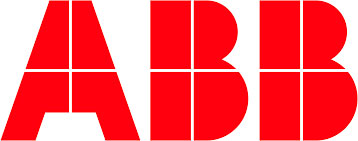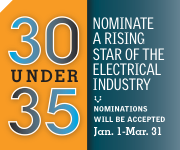ZURICH, Switzerland — “We delivered growth in the fourth quarter, driven by the strong performance of Power Grids, in a continued tough market,” said ABB’s CEO Ulrich Spiesshofer. “Our customers are excited about ABB Ability, which bundles our leading offering as a digital champion in our industry. With the related orders already received, and significant interest, we are building growth momentum as we implement Next Level Stage 3,” he said. “The underlying performance improvement momentum continued and was stronger than the numbers we are reporting if you consider the one-off events that impacted us during the quarter.”
In 2016, we made significant progress transforming ABB into a more customer focused, leaner, digital technology leader,” Spiesshofer said. “We delivered margin accretion through our continued focus on productivity and cost. Our working capital program, strong cash generation and disciplined capital allocation reflect the new cash culture of ABB. We are delivering on our commitment to attractive shareholder returns.”
Short-term outlook
Macroeconomic and geopolitical developments are signaling a mixed picture with continued uncertainty. Some macroeconomic signs remain positive in the United States and growth in China is expected to continue. The overall global market remains impacted by modest growth and increased uncertainties, e.g., Brexit in Europe and geopolitical tensions in various parts of the world. Oil prices and foreign exchange translation effects are expected to continue to influence the company’s results. With this and the ongoing transformation of ABB, we expect 2017 to be a transitional year.
Q4 2016 Group results
Orders
Orders increased 3 percent (steady in US dollars) compared with the fourth quarter a year ago, driven primarily by large contract awards. Large orders ($15 million and above) were 35 percent higher (24 percent in US dollars) from large orders in Power Grids and Discrete Automation and Motion. Large orders represented 17 percent of total orders compared with 14 percent in the same quarter a year ago. These large orders included a $640 million ultra-high-voltage direct current systems order for Raigarh-Pugalur in India and a $100 million order for the upgrade of Sylmar converter station of the Pacific Intertie high-voltage direct current power link in the USA. Base orders (below $15 million) were 1 percent lower (4 percent in US dollars); improving in Discrete Automation and Motion, steady in Process Automation and lower in the two remaining divisions. Total service and software orders increased 4 percent (2 percent in US dollars) compared with the fourth quarter of 2015 and represented 20 percent of total orders, slightly higher than the same period a year ago.
The order backlog at the end of December 2016, amounted to $23 billion, 1 percent lower (5 percent in US dollars) compared with the end of 2015. The book-to-bill ratio in the fourth quarter was 0.92x compared with 0.89x in the fourth quarter of 2015.
Market overview
Demand patterns in ABB’s three regions:
- Demand in Europe was subdued due to moderate overall growth and timing of large capital investments. Total orders declined 8 percent (12 percent in US dollars) while base orders were stable (3 percent lower in US dollars). Base order demand was positive in Spain, Norway and the United Kingdom while weak in Turkey, France and the Netherlands.
- The Americas was steady mainly driven by increased momentum for transmission and distribution needs. Total orders were steady in the quarter as large order awards offset a base order decline of 3 percent. The United States grew 9 percent (9 percent in US dollars). Base orders were positive in the United States and Mexico and declined in Canada and Brazil.
- Demand in Asia, the Middle East and Africa (AMEA) was strong as India continued to invest in reliable and efficient power transmission solutions and China fostered further investment in industrial automation. Total orders for the region grew 17 percent (13 percent in US dollars) driven by strong order development in India and China. Base orders were 2 percent lower (5 percent in US dollars) as strong order development in India, up 14 percent (12 percent in US dollars) and China up 11 percent (5 percent in US dollars), could not offset declines in Saudi Arabia and other parts of South East Asia.
Demand patterns in ABB’s three major customer sectors:
- Utilities continued their investment activities to upgrade the aging power infrastructure and to integrate renewable energy in the grid.
- In industry, investments in robotics solutions and light industries such as automotive, food and beverage remained positive while demand from the process industries, specifically mining and oil and gas remain subdued.
- Transport and infrastructure demand has been mixed. Demand for building automation solutions as well as solutions involving energy efficiency for rail transport remained strong while the marine sector suffered from a sharp decline due to the subdued oil and gas sector with the exception of cruise ships.
Revenues
Revenues increased 1 percent (3 percent lower in US dollars) in the fourth quarter with revenues higher in Electrification Products and Power Grids. Total services and software revenues increased 2 percent (steady in US dollars) and represented 18.5 percent of total revenues compared with 18.0 percent a year ago.
Operational EBITA
Operational EBITA was $1,057 million, 2 percent lower in constant currencies (4 percent in US dollars). Operational EBITA margin was 11.7 percent, 20 basis points lower compared with the same quarter a year ago. Positive impacts from net savings and volume were offset by business mix and higher bad debt expenses due to the default of a large distributor in Turkey and operational currency losses due to the devaluation in Egypt. The bad debt expense and operational currency losses were $30 million and impacted operational EBITA margin by approximately 30 basis points. Excluding these charges, the operational EBITA margin would have increased. The strong margin improvements in Process Automation and Power Grids did not fully offset these negative and unique events in the other divisions.
ABB modified its definition of Operational EBITA to exclude non-operational pension costs and the impacts from changes in pre-acquisition estimates. The results of previous periods have been adjusted to be presented on a comparable basis.
Net income, Basic and Operational earnings per share
Net income increased to $489 million and basic earnings per share was $0.23 compared with $0.09 for the same quarter of 2015. Restructuring and restructuring-related expenses were significantly lower than the same quarter of 2015. During the quarter, net income also included the positive impact from the reassessment of the restructuring and restructuring-related provisions associated with the white collar productivity program which were reduced by $114 million pre-tax. This adjustment was due to significantly higher than originally expected attrition and internal re-deployment rates.
Net income was also impacted by non-operational pension costs of $38 million pre-tax, which primarily resulted from the change in Norway from a defined benefit to defined contribution pension plan as well as an increase of $92 million pre-tax for estimated warranty costs in the solar business for products which were designed and sold by Power-One prior to the acquisition in 2013. During the long warranty periods of the solar inverters designed and sold by Power-One pre-dating the acquisition in 2013, warranty costs have exceeded the amounts originally estimated.
Operational EPS was $0.33 compared to $0.35 for the same quarter of 2015, a decrease of 3 percent in constant currency.
Cash flow from operating activities
Cash flow from operating activities was $1,519 million, 24 percent lower compared with the fourth quarter of 2015, reflecting ABB’s focus on more stable quarterly cash generation throughout the year.
Q4 divisional performance
Electrification Products
Total orders reflect lower large orders in the systems business compared with the same period a year ago. Positive order development in China and India could not offset declines in the US, Canada and the United Kingdom. Revenues grew 3 percent in the quarter as a result of the execution of the systems backlog and higher demand in building products. Operational EBITA margin was impacted by the default of a Turkish distributor and Egyptian operational currency losses resulting collectively in a 90 basis points decline to 15.5 percent. Excluding these charges operational EBITA margin would have been steady in the quarter despite adverse mix. Effective January 1, 2017, electric vehicle charging, solar and power quality businesses are transferred from Discrete Automation and Motion and is expected to initially have a dampening effect on the division’s margin.
Discrete Automation and Motion
Total orders grew 4 percent and revenues were steady as continued strong demand patterns in robotics and the light industry more than offset the impacts from capex declines in process industries such as oil and gas. Operational EBITA margin declined 100 basis points compared with the same quarter a year ago mainly impacted by lower margins in solar, unfavorable mix and low capacity utilization. Effective January 1, 2017, electric vehicle charging, solar and power quality businesses are transferred to the Electrification Products Division due to the synergistic opportunities they have with that portfolio. This transfer of business is expected to have a supportive effect on the division’s margin.
Process Automation
Total orders were 14 percent lower as a result of continued capital expenditure reduction in the process industries. Revenues declined 8 percent as higher service revenues could not offset declines in mining and oil and gas. Operational EBITA margin increased 130 basis points to 13.4 percent due to positive mix and successfully implemented cost reduction and productivity measures.
Power Grids
Total orders were 15 percent higher compared with the same quarter a year ago due to significant large contract awards. Such orders included a $640 million ultra-high-voltage direct current order for Raigarh-Pugalur in India and a $100 million order for the upgrade of Sylmar converter station of the Pacific Intertie high-voltage direct current power link in the USA. Revenues increased 4 percent due to steady execution of a healthy order backlog. Operational EBITA margin increased by 90 basis points to 10.4 percent, mainly driven by higher revenues, improved productivity, solid project execution and continued cost savings. These results reflect the success of the “step change” transformation to date. Going forward, the division will continue to drive further transformation and value creation through its “Power Up” program.
Full-year 2016 Group Results
Orders were 5 percent lower (8 percent in US dollars) compared with 2015. Base order development was 2 percent lower (5 percent in US dollars) while large orders were down 24 percent (27 percent in US dollars) reflecting the high order intake in 2015. Total service and software orders grew 3 percent (0 percent in US dollars) to 18.4 percent of total group orders. The book-to-bill2 ratio was 0.99x for 2016.
Revenues were steady (down 5 percent in US dollars) as revenue growth in Power Grids and Electrification Products offset declines in Discrete Automation and Motion and Process Automation. Total services and software revenues grew 3 percent (0 percent in US dollars) to 17.8 percent of total group revenues.
ABB continued to execute its Next Level strategy in 2016 which resulted in a 50 basis points improvement of the operational EBITA margin to 12.4 percent. The main drivers for the group’s enhanced profitability were continued cost savings and productivity measures.
Net income for the year amounted to $1.96 billion, an increase of 2 percent compared to the previous year. Basic earnings per share in the period improved 5 percent to $0.91 and operational earnings per share was $1.29, an increase of 4 percent on a constant currency basis.
Cash flow from operating activities improved 3 percent to $3.9 billion, free cash flow improved 5 percent to $3.2 billion and cash return on invested capital (CROI) increased 70 basis points to 14.1%. Net working capital as a percentage of revenues reduced by 150 basis points to 11.5 percent compared to 2015.
During 2016, ABB returned $2.9 billion in cash to shareholders through the dividend (in the form of a nominal value reduction) and share repurchases.
Dividend
For 2016, the Board has proposed a dividend increase of 0.02 Swiss francs to 0.76 Swiss francs per share. The proposal is in line with the company’s dividend policy to pay a steadily rising, sustainable dividend over time. If approved by shareholders at the company’s annual general meeting on April 13, 2017, the Board proposes that the dividend be paid as an ordinary dividend. The ex-dividend and payout dates in Switzerland are expected in April 2017. Further information will be made available on ABB’s website in due course.
Share buyback program
On September 30, 2016, ABB announced the completion of the share buyback program that was introduced in September 2014. During the buyback program, ABB repurchased approximately 171 million registered shares (equivalent to 7.4 percent of its issued share capital at the launch of the buyback program) for a total amount of approximately $3.5 billion. In October 2016, ABB announced its plans for a new share buyback program of up to $3 billion from 2017 through 2019. This reflects the company’s confidence in the continued strength of ABB’s cash generation and financial position.
Next Level strategy – Stage 3
On October 4, 2016, ABB launched Stage 3 of its Next Level strategy to unlock value for customers and shareholders. The core elements of this included: shaping ABB’s divisions into four market-leading, entrepreneurial units; realizing ABB’s full digital potential; accelerating momentum in operational excellence; and strengthening ABB’s brand.
Driving growth in four market-leading, entrepreneurial units
ABB is driving growth in four market leading entrepreneurial divisions, Electrification Products, Robotics and Motion, Industrial Automation and Power Grids. These divisions were effective January 1, 2017 and are fully operational.
A quantum leap in digital with ABB AbilityTM
The ABB AbilityTM offering combines ABB’s portfolio of digital solutions and services across all customer segments, cementing the group’s leading position in the Fourth Industrial Revolution and supporting the competitiveness of ABB’s four entrepreneurial divisions. With ABB Ability, the company sees an annual addressable market of up to $20 billion.
Accelerating momentum in operational excellence
The White-Collar Productivity savings program is on track to deliver the increased cost reduction target of $1.3 billion, run rate end of 2017. ABB will achieve these additional savings within the initially announced timeframe and for $200 million lower of total combined restructuring program and implementation costs than initially announced. ABB is continuing its regular cost-savings programs to achieve savings equivalent to 3-5 percent of cost of sales each year.
ABB is on track to deliver its Net Working Capital program to free up $2 billion by the end of 2017. As of December 2016, it has freed up approximately $900 million. Net working capital as a percentage of revenues reduced 150 bps to 11.5% compared to 2015.
Strengthening ABB’s brand
ABB is adopting a single corporate brand, consolidating all its brands around the world under one umbrella. ABB’s portfolio of companies is being unified, showcasing the full breadth and depth of the company’s global offering under one master brand. The unified brand plays a key part in realizing the value potential of ABB’s digital offering, as it increased brand loyalty, price premiums and purchase probability.
The brand features design elements intended to clearly articulate ABB’s vision, direction and unique market position to customers, shareholders, employees and all other stakeholders. ABB’s heritage as a pioneering technology leader and the three focus areas of its Next Level strategy are reflected in its new brand promise: “Let’s write the future.”TM
Outlook
Macroeconomic and geopolitical developments are signaling a mixed picture with continued uncertainty. Some macroeconomic signs remain positive in the United States and growth in China is expected to continue. The overall global market remains impacted by modest growth and increased uncertainties, e.g., Brexit in Europe and geopolitical tensions in various parts of the world. Oil prices and foreign exchange translation effects are expected to continue to influence the company’s results. With this and the ongoing transformation of ABB, we expect 2017 to be a transitional year.
The attractive long-term demand outlook in ABB’s three major customer sectors — utilities, industry and transport & infrastructure — is driven by the Energy and Fourth Industrial Revolutions.
ABB is well-positioned to tap into these opportunities for long-term profitable growth with its strong market presence, broad geographic and business scope, technology leadership and financial strength.
Tagged with ABB, financial, lighting, tED






